READER COMMENTS ON
"New York Times Wrong Again on 'E-Voting'"
(16 Responses so far...)
COMMENT #1 [Permalink]
...
Larry Bergan
said on 6/23/2009 @ 4:30 pm PT...
Any bill which doesn't sue the voting machine corporations out of existence is worthless. Why should we give them one more dime?
COMMENT #2 [Permalink]
...
another joe
said on 6/23/2009 @ 4:41 pm PT...
Brad, NYT is a propaganda rag. Remember how they started the chorus of IRAQ-WMD-SADAM A THREAT!
Here's how it works - NYT publishes a lie (newspaper of record, right) and then the rest of the media repeats the lie (because newspaper of record printed it), creating an echo-chamber and "catapulting" the propaganda.
There are many more examples, this paper is not liberal, and truth does not matter.
Of course, they are careful to embed the propaganda into their daily coverage - but to think that repeatedly getting e-voting wrong (and proclaiming stolen elections of 2000 and 2004 were legit) are somehow oversites...
Glad your trying though...
COMMENT #3 [Permalink]
...
Lisa Pease
said on 6/23/2009 @ 4:41 pm PT...
Brad and this blog have done a lot of good work raising issues surrounding electronic voting.
But on the Holt bill, they are DEAD WRONG.
Holt's bill does NOT allow "forever" the machines Brad so despises. That's a factual error in the report above. They are banned entirely after being eased out. Some states just bought DRE machines with printers, thinking they would be safe. They are not. But would you rather they keep the machines forever (what happens if you DON'T support Holt's bill) or get rid of them eventually (what happens if you DO support Holt's bill)? To me, that's a no-brainer. But you have to get the FACTS straight, which this piece does not!
Holt's bill does the following:
1. Eliminates DREs (if we support it and don't let Hoyer and the rest weaken it before the next vote!) It eliminates the kind that produce paper records more gradually, but it does eventually eliminate them ALL. Trying to do it faster just causes Sec's of State to kill the bill, as they have in the past, hence the compromise timeline.
2. Provides that the paper ballot is "the" legal ballot of record.
3. Only allows NONTABULATING machines to be used to help people cast votes.
4. It does NOT "federally institutionalize the protection of proprietary trade secret software for use in public elections." THAT'S WHAT WE HAVE ALREADY. IT'S ALREADY INSTITUTIONALIZED. What Holt's bill does is brilliant. Who cares what the code says if you can catch the errors with an audit? That's why you HAVE audits. You don't have to trust that the code is safe. You don't check what goes in. You check what comes out, by doing a hand count of the voter verified paper ballot, which is increasingly optiscan, if you read the bill correctly, until it's completely optiscan.
This blog has done a disservice to the voting community by misrepresenting the issues regarding this bill so often I can't help but wonder who is behind these so-called mistakes. After a while (and after numerous attempts at correction), they start to look deliberate.
COMMENT #4 [Permalink]
...
Brad Friedman
said on 6/23/2009 @ 5:45 pm PT...
Lisa Pease - I'm about to go on the air (hosting Mike Malloy Show this week), so can't respond in full at the moment, but will try to later.
However, your suggestion that I have been factually incorrect in stating anything above is, um, factually incorrect.
You said:
Holt's bill does NOT allow "forever" the machines Brad so despises. That's a factual error in the report above. They are banned entirely after being eased out.
Wrong. As I wrote, "the type of machine that misprinted my votes" will be allowed to be used forever by the bill. If you have any confusion about that, I suggest you go back and read the article I linked to which describes the machine I used, which misprinted my vote.
Beyond that, I'll try to respond more fully tomorrow. And, if you wish, since you're working for Holt so fervently, please extend my invitation to him to come on the air on the Mike Malloy Show this week to discuss his bill with me, if he'd like. His office knows where to reach me, and I'd be delighted to give him all the time he needs to explain his bill and to answer my questions about it.
COMMENT #5 [Permalink]
...
the zapkitty
said on 6/24/2009 @ 2:13 am PT...
So... there it is again.
E-voting turned out to be just another
faux-progressive issue for Holt to jump on. Not the first and not the last. All show and no substance. And when the EVM manufactures began filling his campaign coffers after Holt threatened to make e-voting source code a public matter, as any actual election reform law would require, it's been a profitable one for Holt in the bargain.
And yes... Holt's latest bill institutionalizes secret and proprietary corporate source code as the arbiter of our elections. The bill makes a critical problem much
worse and makes it permanent.
And Lisa Pease... by now you should be aware
that studies have shown that the "audit" protocols written by Kathy Dopp for the Holt bill are flawed and can be tracelessly gamed.
Holt knows... but having been granted the fig leaf of respectability by these partial recounts he's shown zero interest in making the needed changes.
All show, no substance.
On one note of (very grim) humor it turns out that there's one progressive bandwagon that Holt won't jump on and try to hijack: Holt's "New Democrats" are fighting fiercely to keep any public health care option out of the "health reform" bill the Democrats are allowing the Republicans to script.
COMMENT #6 [Permalink]
...
NateTG
said on 6/24/2009 @ 6:35 am PT...
If the system is to rely on physical ballots, then those ballots really should be readable without any election-specific contextual information.
Every time that I go through the 'ink-a-vote' thing here in Los Angeles, the paranoid in me wonders whether my ballot (which is just a bunch of dots on a piece of paper) is going to be interpreted correctly at the tally, and, whether the scanner that it's fed into has a camera that records my picture along with my votes. (Ostensibly, the scanner checks for double voting or something.)
COMMENT #7 [Permalink]
...
Ellen Theisen
said on 6/24/2009 @ 6:55 am PT...
Brad,
A little correction: In the introduced bill, the deadline for replacing DREs with VVPAT was changed to 2014 from the previous version which allowed them until 2016.
AND this shortened deadline also applies to the purchase of ballot-marking devices which do not currently exist.
A very serious problem with this bill --- a problem that is little spoken of except by me (and John Gideon when he was still with us) --- is that it would require, by 2014, every polling place in the country to have new accessibility equipment that does not yet exist.
The required functionality would do nothing to assist voters in casting a secret ballot. The functionality would simply provide an independence that is NOT needed for privacy.
EVERY jurisdiction that is currently using paperless DREs would have to purchase new accessibility equipment by 2010 --- a ballot-marking device that automatically deposits the ballot into a privacy sleeve. Only one manufacturer, ES&S, currently makes such equipment, and it has not yet been federally certified.
Then these same jurisdictions would have to replace their equipment AGAIN in every polling place by 2014. They would have to get a ballot-marking device that automatically deposits the ballot into a ballot box.
By 2014 all other jurisdictions as well would have to purchase this new type of ballot-marking device.
Please see our "Timeline" for a brief, but clearer, verbal explanation with an accompanying graphic.
Another windfall for the vendors; another rush to purchase newly developed, poorly tested equipment; another massive headache for election administrators.
And for what? To provide fully independent voting accessibility in every polling place, 75% of which a recent GAO report tells us have obstacles that may impede voters from even getting into the building.
The disabilities "advocates" who insisted that this provision for absolute independence in voting be included in the bill would have shown greater compassion had they insisted that additional funds be provided to give voters with disabilities physical access to the polling places. Then, perhaps these voters could actually USE the accessible ballot-marking devices that already allow them a private vote.
COMMENT #8 [Permalink]
...
truthisall
said on 6/24/2009 @ 8:07 pm PT...
Brad,
Your readers may also want to e-mail the NY Times and explain where the Nixon, Bush 1 and Bush 2 PHANTOM voters came from.
Voter Turnout Required to Match the Recorded Vote in the 1972-2008 Presidential elections
TruthIsAll
June 23, 2009
http://www.geocities.com...rTurnoutReqMatch7208.htm
This is it. Study it carefully.
It's the Ultimate Smoking Gun which proves that the impossible Nixon, Bush 1 and Bush 2 returning voter turnout is not coincidental.
COMMENT #9 [Permalink]
...
Electioneer
said on 6/25/2009 @ 6:39 am PT...
I see and hear all the call for a return to paper ballots, but does no one read history anymore? Doesn't anyone remember Tammany Hall days and other machines like it. Paper is not infallableeither. Ballot boxes, in the paper ballot days would be replaced with others bearing the "correct outcome." Ballot counters could easily overvote a ballot with a piece of lead tucked under a fingernail rendering ALL votes within a contest invalid on that ballot. In the recent past, ballot counters in Florida had piles of the punch out chads at their feet at the end of the day of counting. One needed only to flex the card while examining it for "voter intent." Optical scan is just as easily rigged because the scanners must be programmed for sensitivity; they can easily be made to not see marks on the page. As with any other paper ballot, they can easily be overvoted with lead under the thumbnail as mentioned above, or given a stray mark causing rejection by the scanner.
I do not have an all-encompassing solution, but as an election official, I have run the audit trails on non paper record DRE's; the real DRE's with a physical switch behind the button on the paper face of the machine not the ATM style touch screen machines where the touch area must be programmed in for use. I am completely opposed to their use. The audit trails do show a printed record of every switch activated on the DRE by a touch of the button in an easy to read set of votes for each voter. We test our machines and our tabulation software for accuracy prior to every election, our election coding is maintained on a stand-alone server in a locked cabinet in a locked office along with our tally computers. Machine set-up is performed by an independent company seperate from the one handling the database coding. The resulting pre-election machine test data is reviewed by the company that coded the database after the independent company has tested the programming on each machine. Numerous individually coded safety seals are used to secure the machines and protect the internal chipsets, etc. Those seal codes are checked and recorded fby pollworkers on election day. Attempting to rig an election would require a massive conspiracy including two bi-partisan government offices, multiple contractors/vendors and one elected official's office. In all honesty, none of these people get along well enough to have such a thing happen. All are too busy looking over eachother's shoulders, ready to point the finger of blame if anything goes wrong. So many of the studies done ignore this atmosphere and the fact that any "election official" who does work to "rig" an election will, and should, forfeit his/her career, paycheck and ability to ever work again... not to mention, the right to vote, which, by the way, we do tend to believe in...along with the premise that every vote should count and be counted.
I have not commented on this, or any other anti-voting machine blog before, but please read this with the intent that it was posted...as a little voice for those of us who are not party hacks, who have chosen the field of election administration because we believe in the principles of free and fair balloting. I don't know of any "complete answer" to the problems and, quite frankly, I do not believe that any one answer will ever be sufficient simply because human ingenuity being what it is, there will always be someone who can and will find a way to subvert any technology available almost immediately after it is accepted for use. We will always be able to get over on any automation technology. That does not, however, make us safe using the simplest methods. They, too, were quickly subverted shortly after being introduced as history readily reveals.
Finally, are we ready for hand counted paper in the age of instant information? On election night we are bombarded by calls from the press an hour after the polls close. They know that most election nights we are finished reading tabulating and checking results in a couple hours from the close of polls. They don't even remember that just a few short years ago, before DRE's it took hours to open the old manual machines, record the tallies, fax them to the tabulation center and have the numbers recorded into results. One, Two and Three am results were common. Staffing was enormous, as was the election night cost to taxpayers. Now "the public" demands instant posting of partial results on election night and the press scream about 10pm deadlines.
There simply are no easy answers, and there is no way to provide everyone with all they want.
We need to work together wherever possible to come to some resolution which takes into account what we know from history (and I mean way before the 2000 election), the real world processes used to administer an election, and what careful studies reveal in the context of those processes. Our goal is the same- Every vote must count.
COMMENT #10 [Permalink]
...
disillusioned
said on 6/25/2009 @ 4:28 pm PT...
Electioneer,
Its not so much that paper ballots cannot be tampered with. Its that paper ballots have to be tampered with individually in multiple precints in multiple states. That involves a large conspiracy, unless its a very close election, and then you only have to steal a few precincts in Ohio or get the Supreme Court to rule in your favor. Its also impossible for 1 person to physically create 1,000,000 paper ballots as well. The physical nature of paper makes it that much harder to create, manipulate, destroy, etc.
I agree there has to be a clear, transparent, and accountability trail for paper ballots. Paper isn't perfect by any means but it removes so many of the problems with electronic voting. And who really cares if it takes a week to find out who rightfully won an election? In voting results, accuracy is key, not speed.
Any electronic machine can be hacked, and by a single individual who might not even reside in the same state or even the same country, esp for those that have ANY kind of network connection. For those w/o connections, its still very easy for a single person to manipulate them electronically to change tens of thousands of votes in just a minute or two.
Paper is also recountable. So even 'gamed' optical scanners can eventually be discovered during a hand recount.
Personally I think since our system of government fundamentally relies on voting more than any other single thing, a constitutional amendment should be passed that intentional tampering with votes and vote results is treason ... and we know the only enumerated penalty the founding fathers gave was that treason is punishable by death.
A few public executions of people caught tampering with elections would put a bit of fear into what is viewed as a 'white collar' crime only worthy of a slap on the wrist. In any case I'd rather see someone go to prison or be executed for tampering with the vote than someone who was caught smoking a joint 3 times.
COMMENT #11 [Permalink]
...
Electioneer
said on 6/26/2009 @ 9:08 am PT...
Disillusioned,
I understand your premise of it being easier to tamper with an election system than it is to tamper with individual ballots, but you must take into account several things: First, election systems are generally county-based, not state-wide, even if, as in many states, the same technology is used in most counties within a state. Each County will have a stand-alone system, separate from the others in the state. Database coding, ballot layout and therefore, switch positions of the candidates on a DRE machine (again, the real DRE’s with physical switches) will vary from county to county, and often from town to town. The machines cannot be rigged at the machine level unless the hacker knows each individual layout and the corresponding switch positions. It simply is not as easy as saying “add 100 more votes for Bush” as such a hack is often portrayed in the media. Second, the physical security measures cannot be ignored. The internal and external security seals are coded. Those codes are recorded. When machines are opened, the seals must be broken and at such time the codes are matched and recorded. The behind the scenes documentation is massive. This is before the internal sealing and security features are taken into account. Frankly, such measures have been beefed up on an almost yearly basis and are often layered on, rather than replaced, adding multiple layers of physical security. If, at any time during the opening of the polls any of the seal numbers do not match or the seals appear to be tampered with, poll workers are directed to contact the appropriate officials immediately and the suspect machine would readily be replaced. While a chip set can be replaced with commonly available materials in a laboratory setting, the “real world” is a bit more complicated. By the time all the associated contractors, election officials and poll workers were brought into the “plan,” impacting a nation wide election with a hack even on a county level would be a massive undertaking on a scale comparable to what would actually be required to manipulate op-scan or paper ballots with many of the historical methods that have been used in the not too distant past. It would require far more than a single individual who might not even live in the same state. The only real place for a single individual to have a major impact would be to hack the transmission of results which is increasingly being done electronically. Even if a hack of this nature were to occur, machine tabulations are not taken as gospel either. Boards of Canvassers routinely check machine printouts against results posted by tabulation software. In my county this check is performed against the posted results for every single machine. In even the most loosely organized (or massively sized) counties such checks should be at least partially performed for each municipality. A hack of the transmitted results would be picked up by such a cross check. Tampering with the machines is really just as likely to “eventually be discovered” as any tampering with an op-scan.
As you succinctly stated “unless it is a very close election, and then you only have to steal a few precincts in Ohio,” a massive conspiracy might not be needed. As we have seen in 2000 and 2004 we are, like it or not, in an age where the country is so politically polarized that we are witnesses to elections where techniques once only thought of for use in a municipal contests could actually impact a national race. This is, of course, exacerbated by the great indifference of enormous quantities of the populace where the “extremes” of political thought dominate the discourse and drive the indifference of the “middle.” When combined with the micro-targeting of voters and the technological advances allowing for real-time Election Day pull operations (I have witnessed these operations up-close), national elections are only going to be tighter
I believe that everyone really does “care if it takes a week to find out who rightfully won an election.” When you combine the aforementioned polarization with our need for instant information (The web as a whole, Twitter, etc), the discord over who “stole the election” that will take place while the votes are being tallied will be exacerbated by the video assault we will be treated to showing election boards arguing over “voter intent”. The opinionated bomb throwers in the media (in my opinion, this blog, included) will hardly agree to reasoned and tempered discourse such as we are engaging in right now. There is enormous potential for our country, the great democratic experiment, to be hurled backward to where we stand to resemble Iran more than our own Florida and Ohio of ’00 and ’04.
On labeling vote tampering treason, with all the resultant penalties for such crimes… I couldn’t agree with you more. One day we will have to sit back with a drink and toast the things upon which we agree. The next drink and toast will be to our hard earned freedom to also disagree.
Here's to "us"
COMMENT #12 [Permalink]
...
Brad Friedman
said on 6/27/2009 @ 10:54 am PT...
Electioneer -
I will take your comments on face value that you actually believe what you wrote, rather than the idea that you are simply shilling for proven disreputable technology which has been shown --- scientifically, time and again --- to be utterly antithetical to democracy.
There are so many points you've made in your two notes which are complete and utter, long-ago disproven nonsense from top to bottom. I'd be happy to go point by point to refute each and everyone of them, with scientific citations to back up that refutation, but "debating" an anonymous commenter in such a way, is not particularly productive, given the time it takes.
If you are willing to step out from the shadows of anonymity, I'll be happy to take you on on ALL of those points publicly, since you suggest you celebrate the "hard earned freedom to...disagree". If so, let's do it publicly. What do you have to be afraid of?
To reply very cursorily, however, to just some of the discredited points you forward above:
+ Decentrally counting at the precinct, transparently, in front of the public, all parties and video cameras, on Election Night, does not take "weeks", and is nearly impossible to game. Your suggestion to the contrary suggests you are unaware of how appropriate, transparent hand-counting (or even precinct-based machine counting) of paper ballots actually works.
+ The greatest concern is not from some "hacker" manipulating a voting machine somewhere. It's from election insiders --- actually just one --- who can tamper with results at the tabulator level. That requires a "conspiracy" of one, and it is nearly impossible to discover.
+ That you believe "security seals" keep these machines safe from tampering shows either an utter lack of knowledge about the realities of these machines, the realities of how such seals work (or don't --- as I can offer you countless instances of seals being broken and/or mismatched and/or entirely ignored in the bargain), or it underscores that you are simply here to forward the use of failed technology. You may be doing so for either benign or nefarious reasons (I'll presume the former for now), but your argument displays a complete lack of knowledge of the reality of the "security seal" and how easy they are to defeat by a single determined individual.
+ Your allusions to "Tammany Hall" and the replacement of paper ballots again suggest you've either been misinformed, or remain willfully ignorant of the difference between that type of paper ballot voting, and what it is that election integrity advocates and experts are advocating.
+ The public doesn't "demand" results by 10pm, the media asks for them, and you deliever them. In New Hampshire, where hand-counting is performed in some 20% of the precincts, tallies come in as quickly as they do in the places where machines are used. Either way, ask anybody in public if they prefer their results fast or accurate, and I'm quite sure what the overwhelming answer will be --- even if the question itself is a red-herring, since ballots can be counted quickly, accurately and securely at the precinct, on Election Night without delay.
+ The full face Sequoia AVC Advantage DREs that you use in your county have been shown to be amongst the very worst of all of the available DREs. And that's saying quite a lot. Add to that they, like all other DREs, are 100% unverifiable for the voter, and your request that we simply "trust" in these fully faith-based voting machines is a ticking time bomb for both you and every voter in your county.
+ Computer scientists and security experts concur, almost to a person, that paper ballots are, by far, the most secure, most transparent means for casting votes in an election. That you appear to be in utter denial of that fact, and find it necessary to bring the E-Voting Industry's talking points here is welcome, of course, but suggests failure of due dilligence on your part, or something worse.
As mentioned, if you'd like to contact me privately to discuss these matters, I'll be happy to keep your identify private (I already know who you are, of course) until you otherwise concur to discuss these matters publicly. There is, after all, nothing to hide in this important discussion of our democracy, right? Like so many of the other election officials who comment here, using their own names (FL's Ion Sancho, PA's Leonard Piazza, CA's Freddie Oakley, to name just a few), I hope you'll feel free to put your name, publicly, behind your arguments.
I'll await your private email, and we can take it from there...
COMMENT #13 [Permalink]
...
the zapkitty
said on 6/28/2009 @ 4:05 pm PT...
COMMENT #14 [Permalink]
...
Electioneer
said on 6/29/2009 @ 8:06 am PT...
Brad,
I am well aware you know who I am as I supplied the Blog with an e-mail address using my name. I am going to assume that you are aware I am trained in programming and systems analysis, though I readily, publicly concede I never finished that degree, choosing, instead to enter the field of election administration. I comment behind a screen name because I am not the head of the office and I am not the spokesperson for the office.
It is not the discourse I have a problem with, it is, quite frankly, your manner of carrying on such conversations and the accusatory or inflammatory nature of your responses; very unlike the conversation I was having with “Disillusioned”. I readily play “second fiddle” to the people I work for and do not wish to bring that type of heat down upon them. I hope you will respect my wish to protect “the office” and it’s current occupant.
While your comments repeatedly attempt to cast doubt upon my commitment to free and fair balloting-
“[you] find it necessary to bring the E-voting industry’s talking points here”;
my knowledge of the systems I work with and the overriding election systems we must work within-
“suggests failure of due diligence on your part”;
Or my integrity in the job I perform-
“you may be doing so for benign or nefarious reasons”
I will state in response to the now “public slashing” that I have never attempted, nor will attempt to “shill” for the E-voting industry. My points have been geared toward one end only, citing a view point that is generally lacking on this site, the views of a user of the systems who clearly recognizes, and states above, that no system is foolproof, but who has had the system function very well in the real world. I have also had issues with the system and have worked diligently with the firm to ensure that such issues have been resolved.
I do not discount the possibilities of manipulation from election insiders in E-voting, Op-scan or paper balloting scenarios. I merely bring to bear the view point of one of those insiders stating that there are multiple parties involved in the efforts to bring forth an election and that those parties act as double checks and as balances upon each other.
I do not believe that security seals are the answer, though you focus heavily upon my statement that “they cannot be ignored” as a means to cast doubt upon my every statement. I state quite clearly in my first comment that “human ingenuity being what it is, there will always be someone who can and will find a way to subvert any technology available.” That applies to all aspects of the voting process. Your reference to Dr. Appel’s work assumes I am unfamiliar with it. I have followed his work I am also completely aware that his claims of how quickly he can defeat a security seal was nowhere near the time it actually took him to do so in court. I readily concede, however, that he was able to defeat the seals.
I will state again, finally, that my only reasons for commenting here are twofold: first, to state that there are a great number of us working to administer elections who hold the same beliefs in free and fair elections as you do and that we work diligently within the frameworks we are given to ensure that every vote counts; and second, that election administration is a “system” and that many of the scientific studies done fail to address the multiple layers of security and the checks and balances in place within that system to try and ensure free and fair balloting.
Thank you for your offer of further discourse. I will contact you from the e-mail address supplied. I will, of course, continue reading the blog regularly. We seek the same end, though, perhaps we are simply approaching such end via different routes.
COMMENT #15 [Permalink]
...
Brad Friedman
said on 6/29/2009 @ 1:23 pm PT...
Electioneer said -
My points have been geared toward one end only, citing a view point that is generally lacking on this site, the views of a user of the systems who clearly recognizes, and states above, that no system is foolproof, but who has had the system function very well in the real world.
For the record, we have, over many years, posted links to various vendor/official responses to the various studies showing the failures of the system(s) you are advocating for here.
We've also posted the debunking of those points of views which are often layered with obfuscation upon obfuscation from vendor spokespesons (such as Michele Shaffer of Sequoia), and then repeated by election officials who are stuck w/ those machines and choose to buy into vendor-sponsored talking points instead of dealing with the very real problems their systems present.
So, if I was short with you in my tone, my apologies for that, as it gets very frustrating to see/hear the same already-discredited talking points posted time and again. Even when they are posted by someone who was not necessarily doing so nefariously, but because they have come to actually have "faith" in those talking points.
Your reference to Dr. Appel’s work assumes I am unfamiliar with it. I have followed his work I am also completely aware that his claims of how quickly he can defeat a security seal was nowhere near the time it actually took him to do so in court.
I wasn't actually speaking about only Appel's work. Others have also found serious problems with the type of system your county uses.
there are a great number of us working to administer elections who hold the same beliefs in free and fair elections as you do and that we work diligently within the frameworks we are given to ensure that every vote counts; and second, that election administration is a “system” and that many of the scientific studies done fail to address the multiple layers of security and the checks and balances in place within that system to try and ensure free and fair balloting.
The latter point above is one of those vendor talking points I was referring to. Though there is truth in it (any good piece of propaganda requires same), it fails to address the main problem by obfuscating it with an unquantifiable point. Eg. Yes, the Ford Pinto blows up when hit from behind, but good driving practices greatly limit the possibility of that happening, so no problem in driving the Pinto, as long as your careful. Thankfully, the government didn't accept that argument in the 70s, and forced the recall of all such Pintos. So should they on voting systems that don't work as they are supposed to.
For the record, I don't doubt your interest in "free and fair elections". And I'd not "out" you here without your advance permission, so don't worry about that. (I may be tough, but I'm fair!)
So yes, we'll pick this up, for the moment, via private email shortly...
COMMENT #16 [Permalink]
...
Bob
said on 7/14/2009 @ 3:55 pm PT...
Looking back, the "vote-flipping software" must have been used by liberal Democrats, who took over all three branches of government in the last election!
 The New York Times just doesn't get it. You'd think, by now, they would. But they don't. And they should print a correction immediately.
The New York Times just doesn't get it. You'd think, by now, they would. But they don't. And they should print a correction immediately.

 'Green News Report' 5/6/25
'Green News Report' 5/6/25
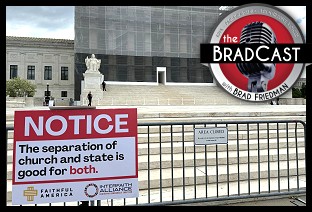 SCOTUS Allowing Publicly-Funded Religious Schools 'Would be a Ground-Breaking Disaster': 'BradCast' 5/7/25
SCOTUS Allowing Publicly-Funded Religious Schools 'Would be a Ground-Breaking Disaster': 'BradCast' 5/7/25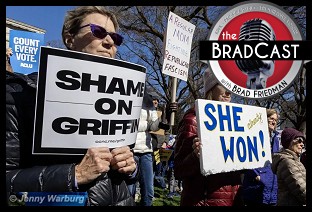 Trump Judge Blocks NC GOP Attempt to Steal 2024 State Supreme Court Election: 'BradCast' 5/6/25
Trump Judge Blocks NC GOP Attempt to Steal 2024 State Supreme Court Election: 'BradCast' 5/6/25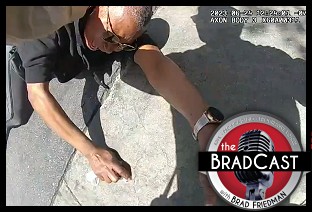 Prosecutors Resign After Trump U.S. Attny Strikes Deal With Felon Cop: 'BradCast' 5/5/25
Prosecutors Resign After Trump U.S. Attny Strikes Deal With Felon Cop: 'BradCast' 5/5/25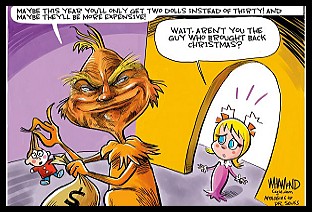 Sunday 'Good Buy, Dolly!' Toons
Sunday 'Good Buy, Dolly!' Toons Trump Losing Streak Continues into SECOND Hundred Days: 'BradCast' 5/1/25
Trump Losing Streak Continues into SECOND Hundred Days: 'BradCast' 5/1/25 'Green News Report' 5/1/25
'Green News Report' 5/1/25 100 Daze: 'BradCast' 4/30/25
100 Daze: 'BradCast' 4/30/25 Campaign to 'Impeach Trump Again' Gains Fresh Momentum: 'BradCast' 4/29/25
Campaign to 'Impeach Trump Again' Gains Fresh Momentum: 'BradCast' 4/29/25 'Green News Report' 4/29/25
'Green News Report' 4/29/25 And Then They Came for the Judges...: 'BradCast' 4/28/25
And Then They Came for the Judges...: 'BradCast' 4/28/25 Sunday 'Desperation' Toons
Sunday 'Desperation' Toons Trump EPA Guts Enviro Justice Office: 'BradCast' 4/24/25
Trump EPA Guts Enviro Justice Office: 'BradCast' 4/24/25 'Green News Report' 4/24/25
'Green News Report' 4/24/25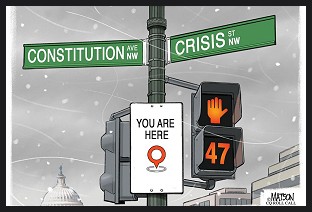 Sunday
Sunday 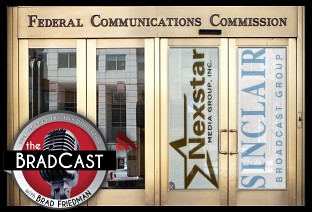 Largest U.S. Broad-caster Hoaxes Viewers to Help Gut FCC Rules: 'BradCast' 4/23/25
Largest U.S. Broad-caster Hoaxes Viewers to Help Gut FCC Rules: 'BradCast' 4/23/25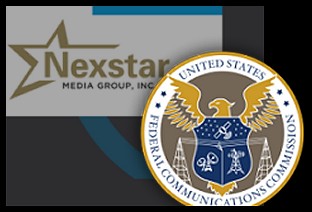 FCC on Precipice of Ending All Limits on Corp. Control of Local TV Stations
FCC on Precipice of Ending All Limits on Corp. Control of Local TV Stations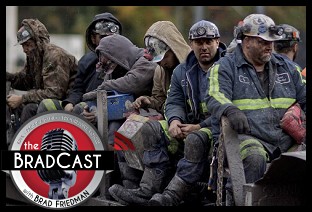 GOP Earth Day 2025 Hypocrisies and Dilemmas: 'BradCast' 4/22/25
GOP Earth Day 2025 Hypocrisies and Dilemmas: 'BradCast' 4/22/25 Pope Francis Dies, Trump Still Alive and Criming: 'BradCast' 4/21/25
Pope Francis Dies, Trump Still Alive and Criming: 'BradCast' 4/21/25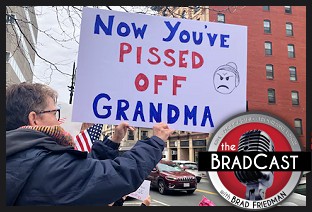 Soc. Sec. Expert Warns DOGE of Collapse, Privatization: 'BradCast' 4/10/2025
Soc. Sec. Expert Warns DOGE of Collapse, Privatization: 'BradCast' 4/10/2025 Trump Blinks, Chaos Reigns, Markets Spike Amid Tariff 'Pause': 'BradCast' 4/9/25
Trump Blinks, Chaos Reigns, Markets Spike Amid Tariff 'Pause': 'BradCast' 4/9/25 SCOTUS Deportation Ruling Grimmer Than First Appears: 'BradCast' 4/8/25
SCOTUS Deportation Ruling Grimmer Than First Appears: 'BradCast' 4/8/25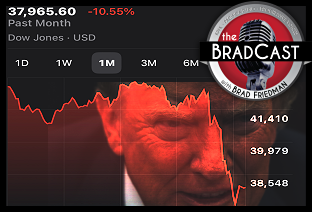 Cliff Diving with Donald: 'BradCast' 4/7/25
Cliff Diving with Donald: 'BradCast' 4/7/25
 VA GOP VOTER REG FRAUDSTER OFF HOOK
VA GOP VOTER REG FRAUDSTER OFF HOOK Criminal GOP Voter Registration Fraud Probe Expanding in VA
Criminal GOP Voter Registration Fraud Probe Expanding in VA DOJ PROBE SOUGHT AFTER VA ARREST
DOJ PROBE SOUGHT AFTER VA ARREST Arrest in VA: GOP Voter Reg Scandal Widens
Arrest in VA: GOP Voter Reg Scandal Widens ALL TOGETHER: ROVE, SPROUL, KOCHS, RNC
ALL TOGETHER: ROVE, SPROUL, KOCHS, RNC LATimes: RNC's 'Fired' Sproul Working for Repubs in 'as Many as 30 States'
LATimes: RNC's 'Fired' Sproul Working for Repubs in 'as Many as 30 States' 'Fired' Sproul Group 'Cloned', Still Working for Republicans in At Least 10 States
'Fired' Sproul Group 'Cloned', Still Working for Republicans in At Least 10 States FINALLY: FOX ON GOP REG FRAUD SCANDAL
FINALLY: FOX ON GOP REG FRAUD SCANDAL COLORADO FOLLOWS FLORIDA WITH GOP CRIMINAL INVESTIGATION
COLORADO FOLLOWS FLORIDA WITH GOP CRIMINAL INVESTIGATION CRIMINAL PROBE LAUNCHED INTO GOP VOTER REGISTRATION FRAUD SCANDAL IN FL
CRIMINAL PROBE LAUNCHED INTO GOP VOTER REGISTRATION FRAUD SCANDAL IN FL Brad Breaks PA Photo ID & GOP Registration Fraud Scandal News on Hartmann TV
Brad Breaks PA Photo ID & GOP Registration Fraud Scandal News on Hartmann TV  CAUGHT ON TAPE: COORDINATED NATIONWIDE GOP VOTER REG SCAM
CAUGHT ON TAPE: COORDINATED NATIONWIDE GOP VOTER REG SCAM CRIMINAL ELECTION FRAUD COMPLAINT FILED AGAINST GOP 'FRAUD' FIRM
CRIMINAL ELECTION FRAUD COMPLAINT FILED AGAINST GOP 'FRAUD' FIRM RICK SCOTT GETS ROLLED IN GOP REGISTRATION FRAUD SCANDAL
RICK SCOTT GETS ROLLED IN GOP REGISTRATION FRAUD SCANDAL VIDEO: Brad Breaks GOP Reg Fraud Scandal on Hartmann TV
VIDEO: Brad Breaks GOP Reg Fraud Scandal on Hartmann TV RNC FIRES NATIONAL VOTER REGISTRATION FIRM FOR FRAUD
RNC FIRES NATIONAL VOTER REGISTRATION FIRM FOR FRAUD EXCLUSIVE: Intvw w/ FL Official Who First Discovered GOP Reg Fraud
EXCLUSIVE: Intvw w/ FL Official Who First Discovered GOP Reg Fraud GOP REGISTRATION FRAUD FOUND IN FL
GOP REGISTRATION FRAUD FOUND IN FL

































